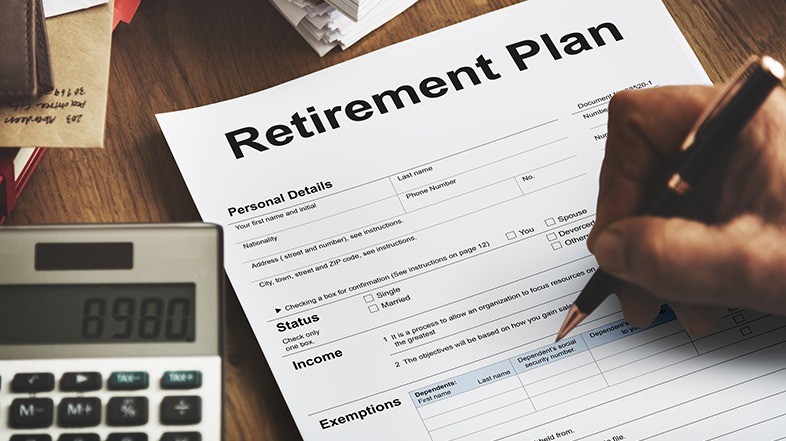
3 Tips for Saving for Retirement After 40
Saving for retirement if you’re over 40 brings up a key concern: Will I have enough money to retire based on what I’ve saved thus far?
Reports that have flooded the news lately paint a bleak outlook for millions of Americans’ retirement income.
Most people in their 40s are at their peak earning potential. Yet, statistics show more and more aren’t able to save the maximum due to other priorities.
A recent survey by T. Rowe Price showed that 69% of parents want to put money toward college first, and more than three quarters say they are willing to delay retirement to pay for kids’ schooling.¹ Add to that the $4 trillion in consumer debt Americans now owe ($1 trillion of which is revolving debt such as credit card debt), the rising cost of healthcare, and taking care of aging parents, and it’s not surprising retirement savings outlook is bleak.
It’s also no wonder so many 40-somethings lack confidence in their retirement preparedness and are often at a loss about where to start to get back on track.
If you’re feeling overwhelmed and uncertain, take a deep breath. There are step you can take today to turn things around. The fact that you’re reading this article says you’re ready to do something about your future.
The key here is action. But not just any action. Informed action.
Below are 3 things you can do right now to take back control of your retirement savings and become an informed, engaged investor. Let’s break it down, shall we?
#1 Get a Retirement Plan in Place ASAP

Think about this: If you had almost $200,000 average balance at retirement age and you were making $50,000 per year at your job when you retire, how long are these funds going to last you in retirement?
Will this give you the retirement you truly desire? For most, the answer is no.
According to a recent study, the average 401k balance for ages 40-49 is $106,200. And the median balance is $36,900.²
Is this where you want to end up at retirement age? Probably not.
Here’s what you can do today to turn things around: Sit down and create a plan for retirement. If you created a plan years ago, but haven’t followed it, then hit the reset button and start planning.
At what age do you want to retire? How much money will you need, not to just scrape by, but have a fulfilling, comfortable retirement?
This is what you need to figure out. Write it down.
Let’s say you’re a 42-year-old woman who wants $1 million by the time she’s 70 (when she plans to retire). She must have $10,000 in savings today, save $10,000 for the next 28 years, and then earn 7.5% percent each year to reach that goal. It might sound impossible, but with a plan that reduces spending and increases the amount saved, it can be done.
The important thing is to get clear on when you will retire and how much you’ll need for the lifestyle you desire. From there, take a look at how much you’ve already saved and figure out what you need to do to get back on track.
We can’t overemphasize how important this first step is.
Because, if you show up and work the plan, you may find a lot of anxiety and stress over your retirement savings will subside. You’ll be back in control and on the way to achieving your goals.
Check out our retirement calculator to see how much you’ll need at retirement, and calculate how professional help may improve your future retirement income. If you’re stuck, we recommend seeking third-party advice as soon as possible.
#2 Get Debt under Control

When it comes to planning, prioritizing spending and saving is critical. So is getting your debt under control.
A Bankrate survey conducted in February this year shows that 40% of respondents aren’t saving because they have too many other expenses.³
Whether it’s student loans, credit cards, auto loans, or mortgages, debt not only prevents you from maximizing your retirement savings, but it may also affect your retirement lifestyle should you carry that debt into retirement.
Much like tip #1 on saving for retirement, if you’re over 40, the key here is to add up all the debt you owe and the interest, and create a plan to get that debt paid down. There are a variety of philosophies out there on how to pay off debt quickly–do a quick internet search, and you’ll find the advice you need to get started.
It’s worth noting that more and more people are starting to side hustle–taking on side jobs to either help pay down debt or using that money for retirement savings. Depending on how much debt is owed, others are downsizing homes, cutting back on vacations…doing what they can to save and get out of debt.
Like saving for retirement, having a solid plan in place and working the plan are key.
#3 Maximize Your Retirement Savings This Year

This might seem like a stretch from where you are right now, but do whatever you can this year, and every year thereafter, to maximize contribution limits on your 401(k) or other workplace retirement accounts. And, if you have one, your IRA.
The annual contribution limit has been raised to $19,000 for 2019 for employees who participate in 401(k), 403(b), most 457 plans, and the federal government’s Thrift Savings Plan. This is $500 over 2018.
For employees age 50 or older in the plans listed above, the additional contribution limit will stay the same for 2019 at $6,000. This means the annual contribution limit is $25,000 for those 50 or older.
Obviously, it’s much easier to max out the $19,000 2019 contribution if you earn more money. If this is a stretch, do what you can to save as close to $19,000 as possible.
Contribute at least the minimum of what your company will match because it’s basically FREE money to you. And, depending on what your company matches, it may double the amount of what you’re already saving.
Let’s say your company matched 100% up to 6% of your pay. With a $55,000 salary, you could put in 6% or $3,300 for the year, and the company would match this at 100%.
That’s another $3,300 per year of free money that’s yours to keep! This extra $3,300 doesn’t include compounding interest or your earnings. This is just about the additional money you could be saving with your company match.
See why this is so critical to your retirement savings?
If you’d like more tips on how to have more income at retirement, download our guide on
How to Supercharge Your 401(k) Performance Today.
Sources:
- https://www.troweprice.com/corporate/en/press/t–rowe-price–many-parents-short-changing-their-retirement-to-c.html
- https://www.nerdwallet.com/article/investing/the-average-401k-balance-by-age
- https://www.bankrate.com/banking/savings/financial-security-march-2019/









